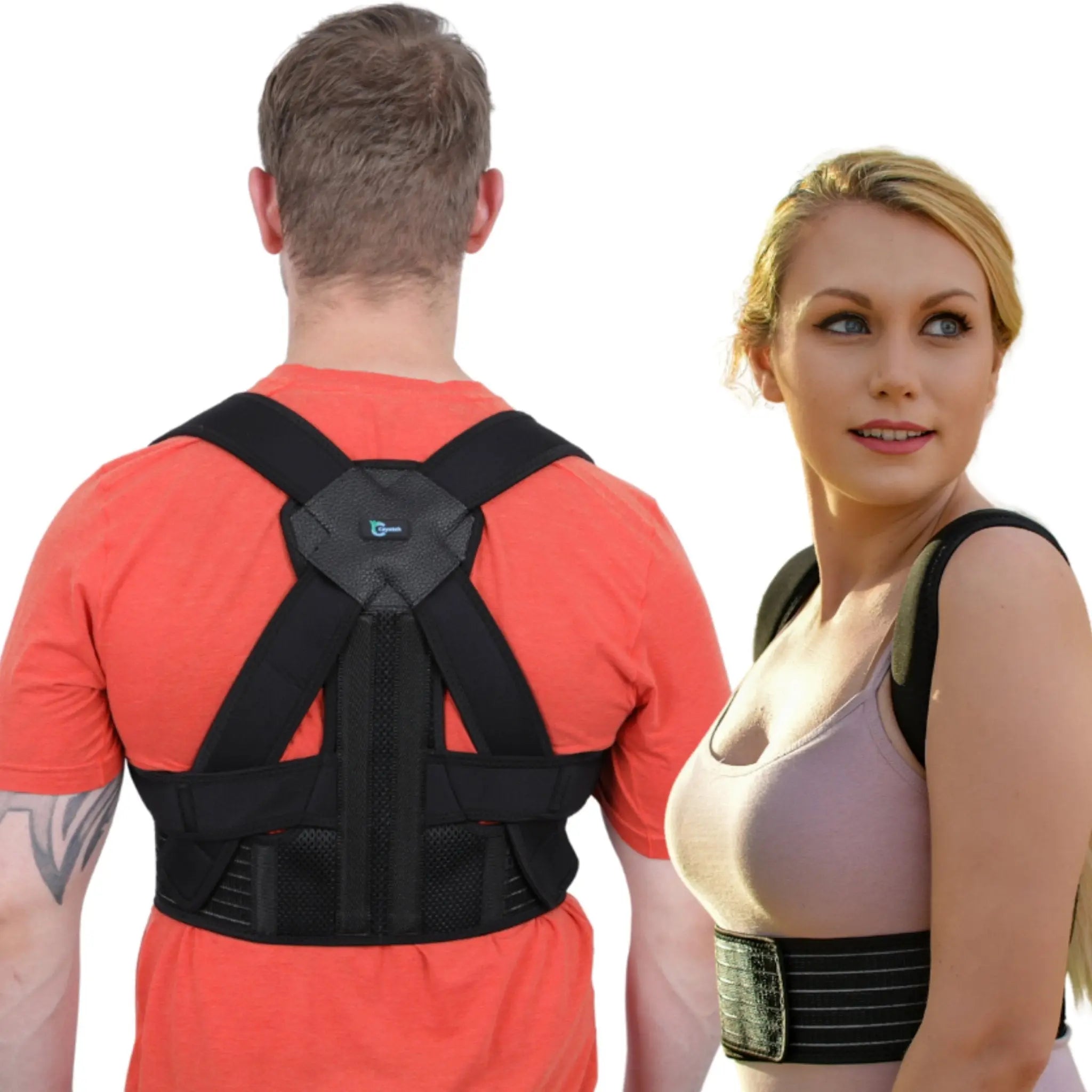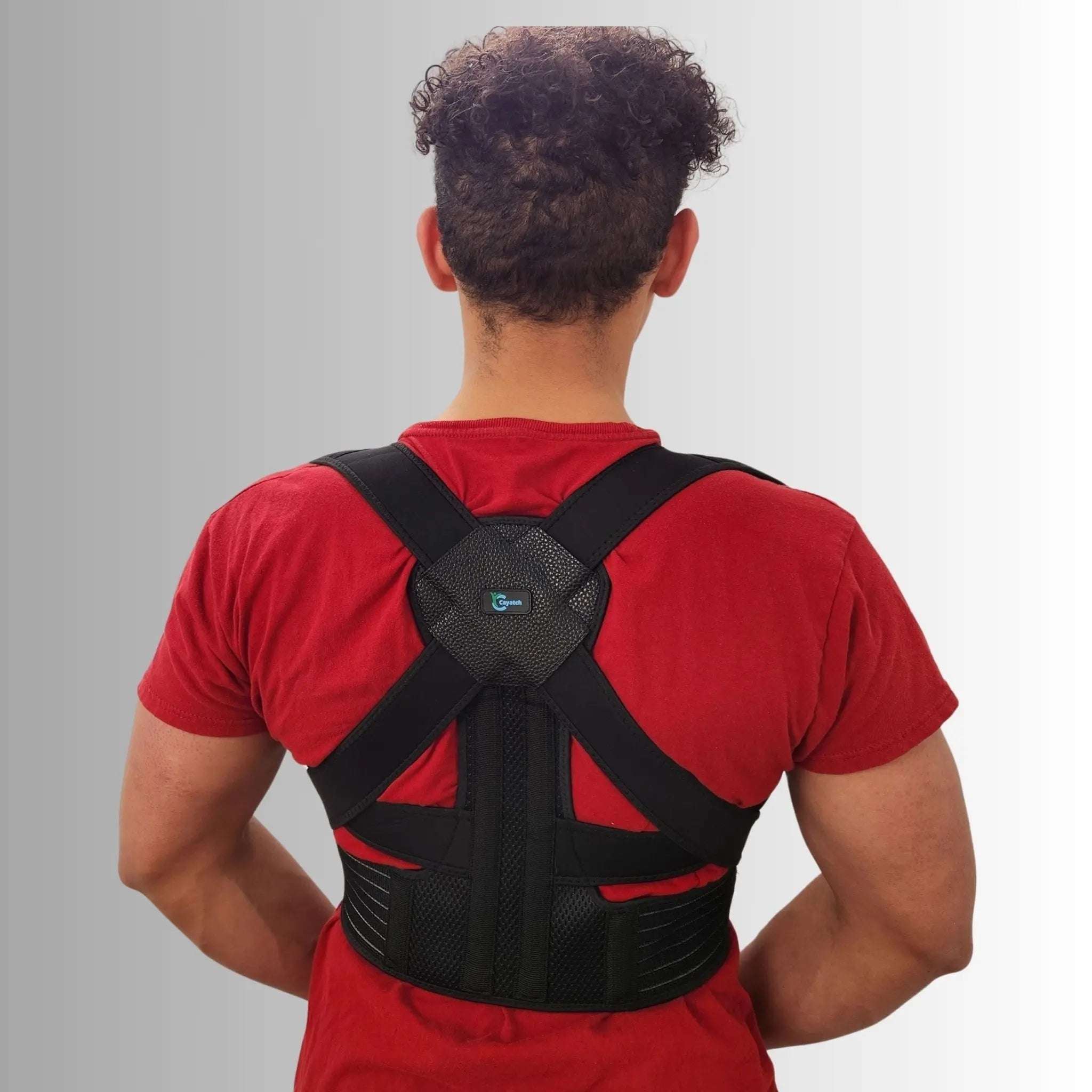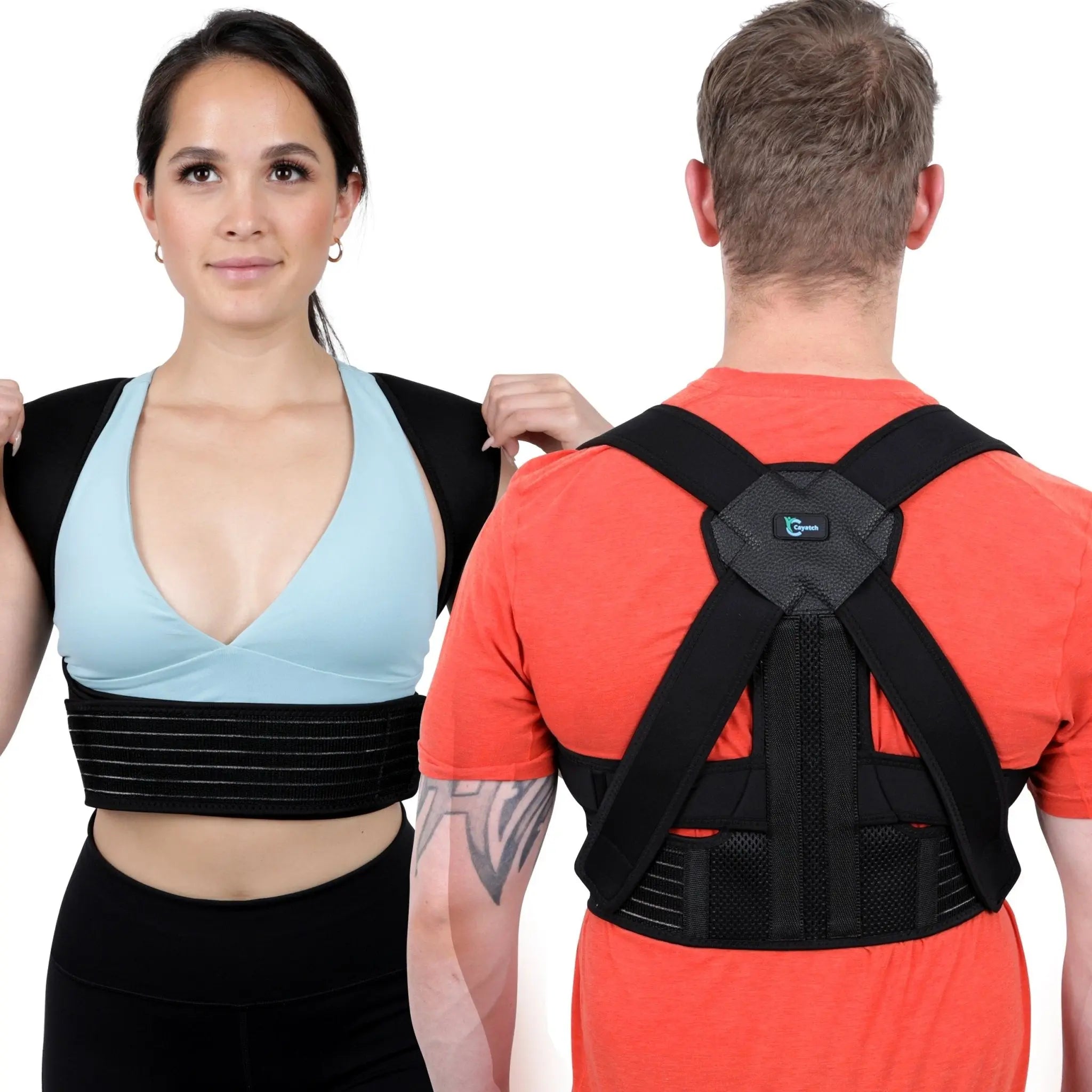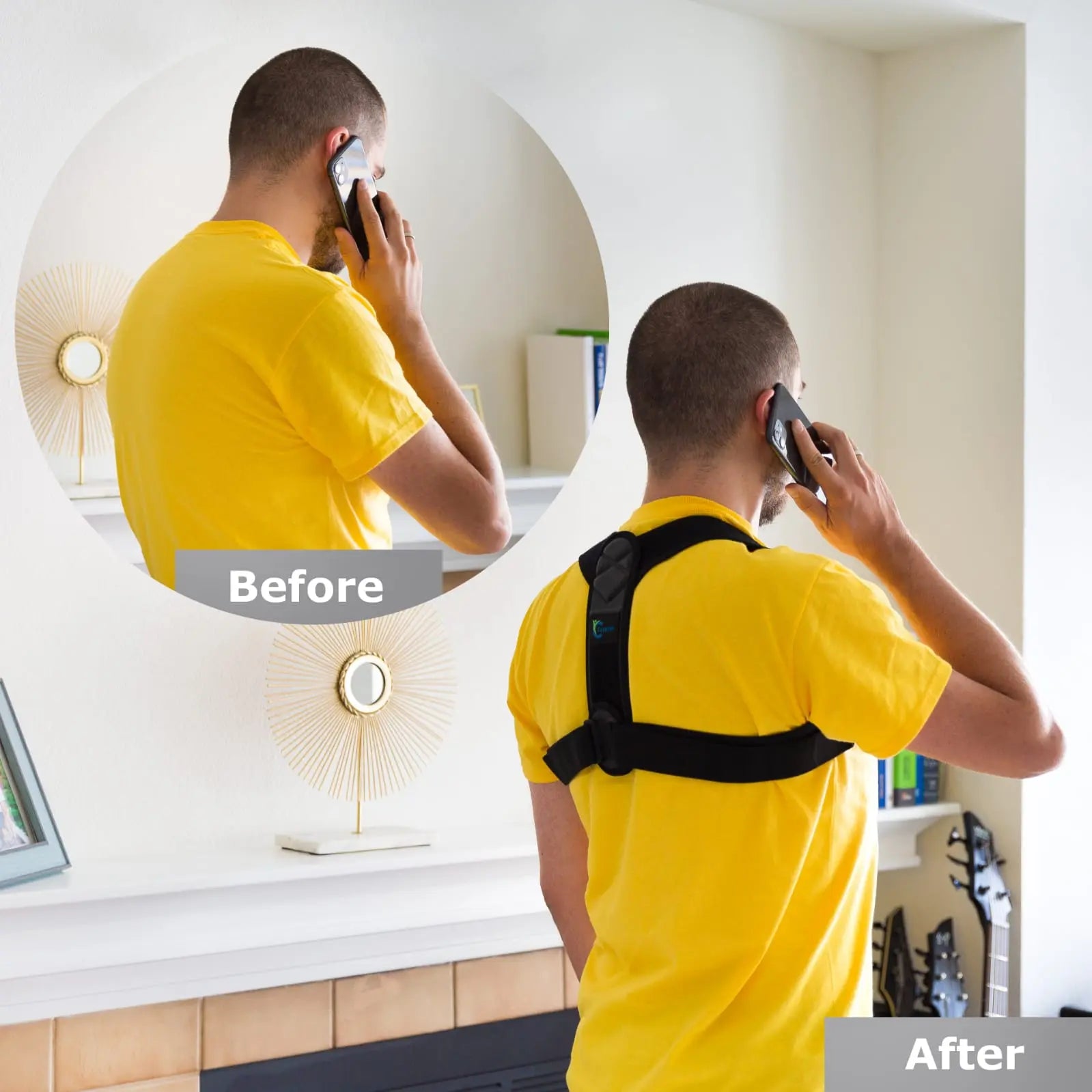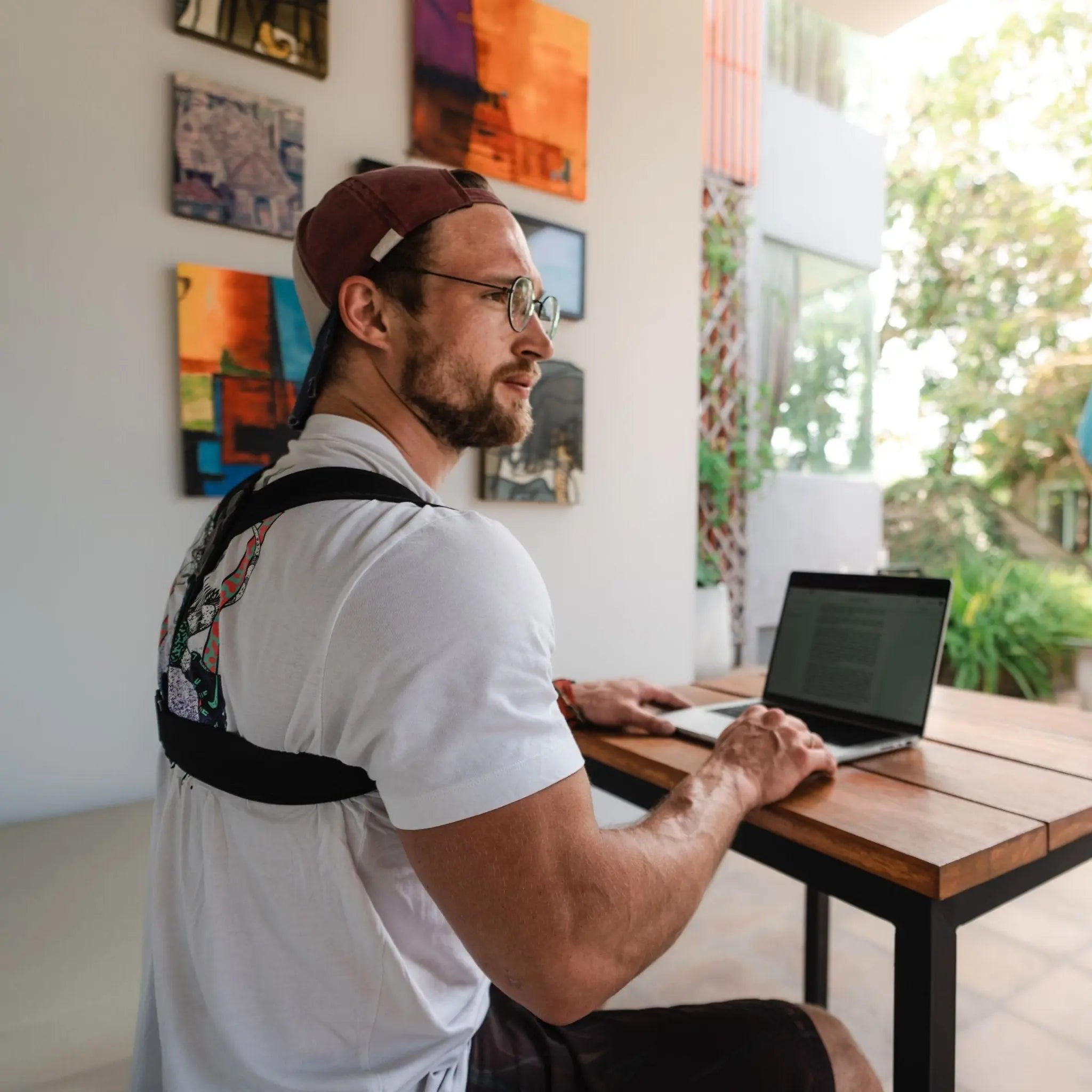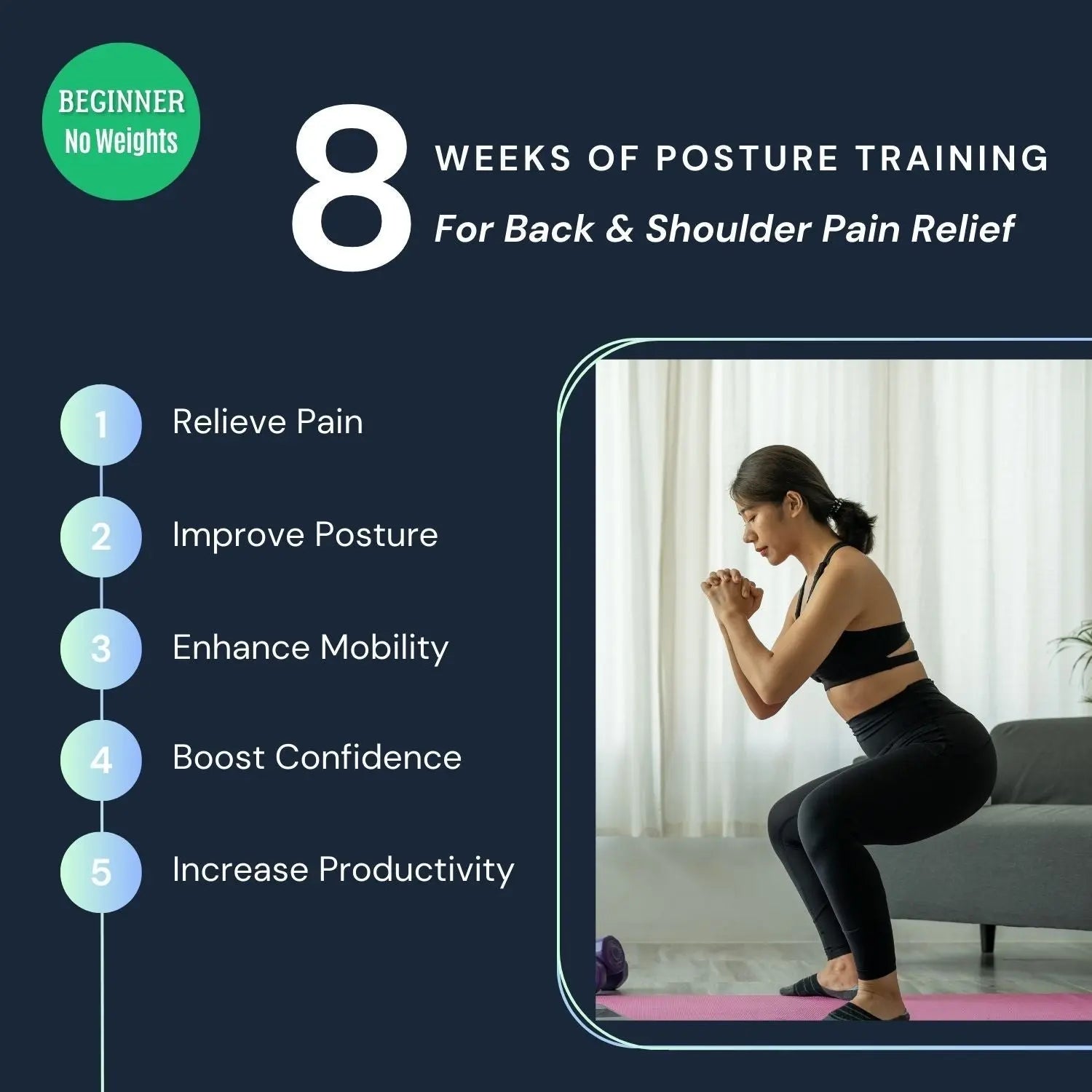10 Easy Posture Exercises For Seniors | Improve Posture At Any Age

Maintaining good posture is super important, especially for seniors. This can be achieved with regular postural exercises. Think of it as giving your body a tune-up!
Good posture helps keep the spine and back strong, thus reducing aches and pains. Poor posture, on the other hand, can lead to issues like back pain, reduced balance and flexibility, and even breathing and digestion.
Discover how posture exercises can significantly enhance the health and well-being of seniors as we delve into 10 simple yet effective exercises tailored to improve posture.
Why Posture Matters for Seniors?

Standing up straight is more than just good manners. It's about keeping your spine healthy and strong.
“Exercise promotes a healthier, longer, and happier life in older people,” says Dr. Amiethab Aiyer, an Orthopaedic Foot & Ankle Surgeon at Johns Hopkins hospital.
Let's talk about why it's important for seniors:
- Fewer Headaches: Slouching and allowing your head to droop can result in neck muscle tightness and headaches. Maintaining proper posture by standing tall may reduce the frequency of headaches.
- Better Balance: Maintaining an upright posture can reduce the risk of falling and slipping, which is important as falls can have severe consequences in seniors.
- It Helps Your Back: Standing properly uses the muscles that support your spine. If you slouch or have an unnaturally curved spine, it likely causes back pain over time.
- Good for Digestion: Optimal movement of food and digestive juices occurs when your body isn't compressed. However, slouching can disrupt digestive function, increasing the likelihood of issues like constipation or GERD.
10 Posture Exercises for Older People

These exercises aren't just simple moves, they serve as a gentle prompt to the body to maintain an upright posture and foster well-being.
Exercise 1 - Shoulder Rolls
Shoulder rolls help relieve shoulder tension and stiffness, improving flexibility and range of motion.
This exercise can benefit the elderly by promoting shoulder mobility, reducing discomfort, and enhancing upper body flexibility.
Step by Step Instruction
- Step 1: Stand or sit comfortably with your arms hanging by your sides.
- Step 2: Lift your shoulders towards your ears in a circular motion.
- Step 3: Move your shoulders backward in a circular motion, then bring them forward.
- Step 4: Repeat the circular motion for 10-15 times.
- Step 5: Gradually increase the size of the circles for a deeper stretch.
Exercise 2 - Chin Tucks, a.k.a Neck Retraction

Chin tucks strengthen neck muscles, improve posture, and alleviate neck pain or stiffness.
Older people can benefit from improved neck flexibility and reduced strain. As a result, everyday activities like, walking, reading or watching TV are more comfortable.
Step by Step Instruction
- Step 1: Sit or stand with a straight spine.
- Step 2: Gently draw your chin inward without tilting your head up or down.
- Step 3: Hold for a few seconds, feeling a stretch in the back of your neck.
- Step 4: Release and repeat 10-15 times.
Exercise 3 - Wall Angels
Wall angels exercises target the upper back and shoulders, promoting better posture and shoulder blade stability.
It enhances upper body strength, reduces back pain, and supports an upright posture for improved balance.
Step by Step Instruction
- Step 1: Stand with your back against a wall and feet hip-width apart.
- Step 2: Bend your elbows at 90 degrees, pressing them against the wall.
- Step 3: Slowly slide your arms up and down along the wall, maintaining contact.
- Step 4: Repeat for 10-15 times.
Exercise 4 - Seated Spinal Twist
Seated spinal twists enhance spinal mobility, reduce lower back pain, and stretch the muscles along the spine.
This aids in alleviating back discomfort and fosters a healthy spine, enhancing mobility for daily tasks.
Step by Step Instruction
- Step 1: Sit on the floor or a chair with a straight back.
- Step 2: Cross one leg over the other and place the opposite elbow outside the bent knee.
- Step 3: Twist your torso gently, looking over your shoulder.
- Step 4: Hold for 15-30 seconds and repeat on the other side.
Exercise 5 - Bridge Pose

The bridge pose targets the lower back, buttocks, and thigh muscles. It helps strengthen the core, improves flexibility in the spine, and engages the glutes.
It also aids in maintaining mobility and strength in the legs, which is essential for daily activities like walking, bending, and standing.
Step by Step Instruction
- Step 1: Lie on your back with knees bent and feet hip-width apart.
- Step 2: Place your arms by your sides with palms facing down.
- Step 3: Press through your feet, lifting your hips towards the ceiling.
- Step 4: Engage your core and thighs, creating a straight line from shoulders to knees.
- Step 5: Hold the position for 20-30 seconds, breathing steadily.
- Step 6: Lower your hips back down and repeat for 2-3 sets.
Exercise 6 - Cat-Cow Stretch

The cat-cow stretch is a gentle yoga flow that promotes spinal flexibility and improves posture. This stretch reduces stiffness and helps alleviate back pain.
Step by Step Instruction
- Step 1: Start on your hands and knees in a tabletop position.
- Step 2: Inhale, arch your back, and lift your head and tailbone towards the ceiling (Cow Pose).
- Step 3: Exhale, round your back, tuck your chin to your chest, and draw your belly button towards your spine (Cat Pose).
- Step 4: Repeat the flow for 1-2 minutes, coordinating with your breath.
Exercise 7 - Standing Side Bend
The standing side bend targets the muscles along the sides of the torso, promoting mobility in the spine.
It improves balance and elongates the muscles surrounding the waist, reducing the likelihood of stiffness and discomfort for seniors.
Step by Step Instruction
- Step 1: Stand with feet hip-width apart and arms by your sides.
- Step 2: Inhale, raise one arm overhead, and exhale, bending gently to the side.
- Step 3: Keep your hips stable and feel the stretch along the side of your body.
- Step 4: Inhale back to the center and repeat on the other side.
- Step 5: Repeat 8-10 times on each side.
Exercise 8 - Chest Opener
The chest opener exercise stretches the chest muscles and shoulders and promotes better posture.
This exercise counteracts the forward slump often associated with aging. It improves posture and reduces tension in the chest and shoulders.
Step by Step Instruction
- Step 1: Stand or sit with a straight spine.
- Step 2: Clasp your hands behind your back, straightening your arms.
- Step 3: Lift your arms slightly, opening your chest and squeezing your shoulder blades together.
- Step 4: Hold the position for 15-30 seconds, breathing deeply.
- Step 5: Release and repeat for 2-3 sets.
Exercise 9 - Shoulder Blade Squeezes
Squeezing your shoulder blades together can help you build strength in the muscles that support your shoulders and prevent slouching. The benefits include stronger shoulder support, improved posture, reduced discomfort in the upper back.
Step by Step Instruction
- Step 1: Relax your arms and let them hang loosely by your sides while you sit or stand.
- Step 2: Allow your shoulders to relax, not shrugged.
- Step 3: Pull your shoulder blades toward your spine and squeeze them together while maintaining straight neck and head.
- Step 4: Maintain this squeezing motion for five to ten seconds.
- Step 5: Relax your shoulders.
- Step 6: Aim for ten to fifteen repetitions.
Exercise 10 - Leg Lifts
Leg lifts target the muscles in the legs, particularly the abdominals, quadriceps, and hip flexors. It is valuable for elders as they contribute to enhanced leg strength.
Improved leg strength can aid in daily activities such as walking and standing, reducing the risk of falls. Leg lifts promote core strength and stability, which are essential for overall functional independence.
Step by Step Instruction
- Step 1: Lie on a mat with your legs straight.
- Step 2: Place your hands by your sides or under your hips for support.
- Step 3: Lift one leg off the ground, keeping it straight.
- Step 4: Hold for a few seconds at the highest point.
- Step 5: Lower the leg back down slowly.
- Step 6: Repeat with the other leg.
- Step 7: Perform 10-15 repetitions for each leg.
- Step 8: To challenge yourself, try lifting both legs simultaneously, ensuring controlled movements to avoid straining the lower back.
Related Post: Exercises to Improve Your Posture
Frequently Asked Questions (FAQs)
How can older people improve their posture?
Maintaining a lifestyle with consistent exercise routines can improve posture in seniors.
Incorporating core-tightening exercises and stretches to loosen tight muscles might help. Exercise, yoga, and tai chi can improve posture gradually.
Is it possible for a person who is 60 years old to enhance their posture?
Improving posture at the age of 60 is possible, but it depends on the severity of the condition and the flexibility of one’s body.
Healthcare professionals can create customized exercise and age-appropriate yoga routines to improve posture.
Can poor posture be corrected at any age?
Proper exercise and lifestyle changes can improve bad postures at any age as some of the reasons behind bad postures are stiff muscles and lower flexibility.
A combination of education, stretches, yoga, and tai chi can alleviate aging related posture issues within a few weeks to a few months.
How can seniors strengthen their upper back?
Exercises like shoulder rolls, upward planks, wall push-ups, and other resistance band workouts can improve posture.
Incorporating muscle-strengthening poses will be helpful for seniors to strengthen their upper back.
Wrapping Up
These 10 simple posture exercises for seniors serve as a gift to their bodies when practiced regularly. We discussed the importance of good posture, which not only strengthens the spine but also alleviates aches and pains.
Conversely, inadequate posture can lead to numerous issues, including back pain, reduced energy, compromised balance and flexibility, digestive discomfort, and even heart problems. However, through these straightforward exercises, seniors can foster improved health and well-being.























